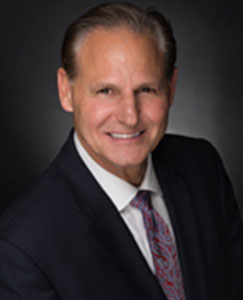
Isn’t It Time to Declutter Your Hiring Process?
The magic of decluttering and refocusing your life have been frequent discussion points lately, with experts weighing in on how to create the best possible environments for living and working. Many companies could also benefit from applying the principles of decluttering to their hiring processes. If your company hasn’t examined the recruitment-to-onboarding process in a while, it may be time to revisit these procedures to eliminate steps that may be slowing the process, resulting in loss of top talent.
Streamlining the hiring process is important to attracting and bringing in new talent, especially in the current candidate-driven market among the executive and professional ranks. “Potential candidates who are unimpressed by the way they’re being evaluated will almost certainly go elsewhere, and word spreads quickly about long and confusing recruitment procedures,” says Gary Bozza, Managing Partner of WorldBridge Partners Chicago NW. “Condensing the hiring process eases stress on hiring managers, reduces the cost of hiring and ensures that top-tier candidates are coming through the talent pipeline with ease.”
Bozza provides the following tips for shortening the hiring process:
Assess your current process
The first step in determining if there are kinks in the recruitment process is to conduct an internal hiring audit. Do you know what your average approved requisition hire date is? Take a look at your process and document it all the way through to address what is working and what isn’t. Seeing how things are flowing will provide perspective and let you know where improvements can be made. Additionally consider the process from the candidate’s perspective. What feedback have they given regarding the interview process, or why they turned down your job offer?
Create robust job descriptions
An effective job description should do the initial screening for you. It shouldn’t just tell candidates what is expected of them; it should display the company culture, showcase the brand and ultimately let candidates know why this is – or isn’t – the job for them. This demands understanding the core requirements of the position and what the candidate will do on the job to create value for you and your company, as well as career development for them. Every requirement you put in your job description has the potential to negatively impact or limit the number of people who might apply for the position, and that can hurt you in a market where the best candidates know they have multiple opportunities. Keep requests to “must haves” and save the fluff for your interviews.
Use mobile-friendly, quick-apply platforms
Today’s candidates live by modern technology and look to companies offering a mobile, quick-apply process, rather than those that require filling out endless online forms. Many companies are finding that a mobile-friendly process leads to an increase in passive applicants (high-performing, employed candidates) overall, which is especially helpful when it comes to filling positions in sectors where talent is often in short supply. If you have not implemented new technologies into your hiring process, that make it easy for candidates to apply for jobs instantly, you are in danger of losing out to the competition.
Establish a reasonable timeline
Start with the “drop dead” date that a new hire needs to be on board and work backwards. Estimate that interviews will take at least two weeks, then assume that two more weeks will pass between the time an offer is extended and when a candidate starts, enabling you to begin backfilling dates on a calendar. If the job is open today, figure out now when you need to interview candidates for the first and second rounds. Also take into account flight and hotel scheduling for on-site interviews, background checks, testing, references, and other paperwork that must be completed.
Involve decision makers early
Have hiring managers sign off on the job description and commit to making room in their calendars to schedule interviews. Delaying the process because of scheduling difficulties causes candidates to lose interest. Ideally, the first interview should occur no longer than a week out from first contact. If multiple interviewers are involved, the candidate should know with whom they will be interviewing, and how long it will take. Bozza recommends that these interviews occur no longer than one week after the first interview.
Make interviewing pay off
Ensure that your interviewing team is fully trained on the interview process and aware of their role, so that ideally a decision can be made after one full-cycle interview with the candidate, possibly two if there are a couple of candidates who stand out. Assign topics and questions that each interviewer will be discussing with the candidate. When interviewers head into the interview without a guideline, they will most likely ask similar questions, frustrating the candidate, and then leave the meeting with a limited profile of the candidate. Having a plan allows the interviewers to collaborate and share detailed information about each targeted area and how they will evaluate the candidate.
Make the most of your recruiter
A quality recruiter can help you through the process, saving time on screening applicants and expediting communication. Count on your recruiter to communicate all decisions and next steps to candidates and to follow up with them after each stage of the hiring process, up until the final decision has been made. The recruiter can also provide feedback to candidates on why they were not selected, approaching the conversation in a way that keeps the door open for an ongoing relationship and improves your company’s brand.
“A long, drawn-out process turns the best candidates away from your company and costs you both time and money,” concludes Bozza. “By streamlining your recruiting process and shortening time-to-hire, you’ll be able to attract and retain top talent for your organization.”

Gary Bozza opened the doors of WorldBridge Partners Chicago NW in 1997. Recognized for his ability to get results, he has been building real world leadership teams for four decades on both sides of the hiring process. Gary’s practice is dedicated to helping Owners, CEOs, Presidents, Vice Presidents, and Private Equity Firms drive revenue and maximize the effectiveness of human capital resources, while building enterprise value. “The WorldBridge Way” is a 26-year proven & rigorous search methodology that produces timely solutions, resulting in successful, high-performance teams. In 2022, Forbes recognized WorldBridge Partners as “America’s Best Recruiting Firm”.
Contact Gary today at (847) 550-1300 ext. 33 or garyb@worldbridgepartners.com
